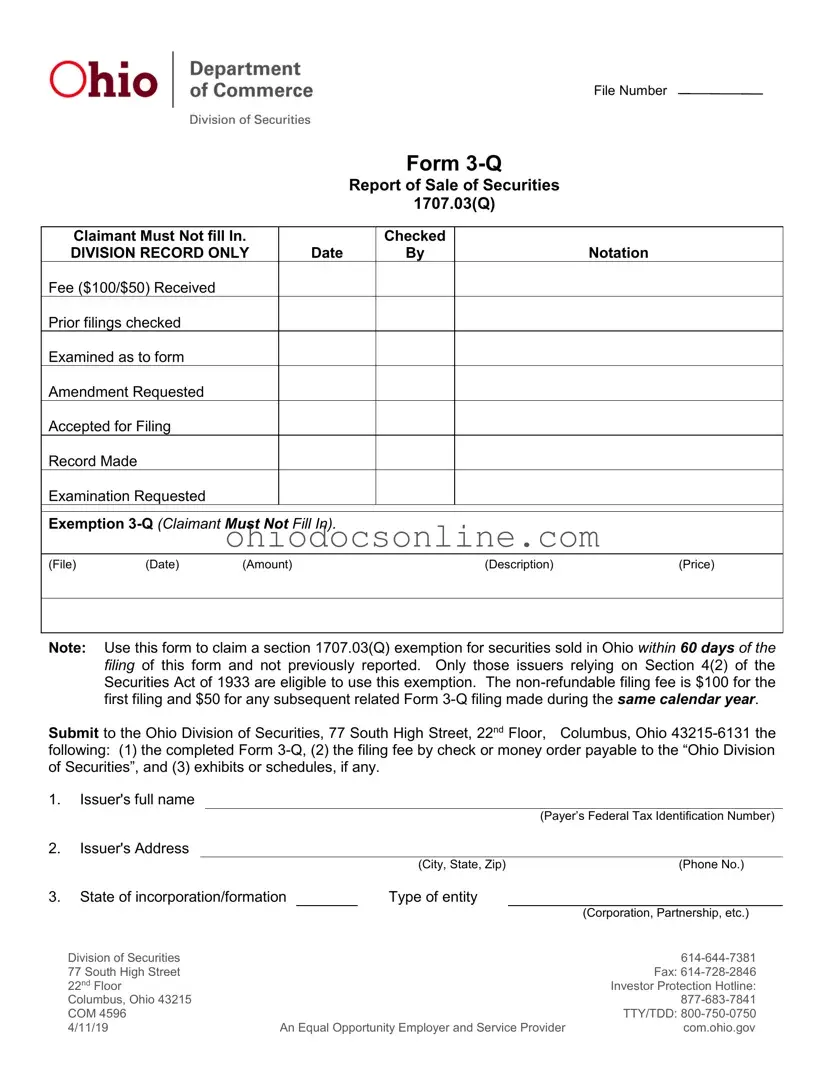Ohio 3 Q Template in PDF
The Ohio 3 Q form is a crucial document used to claim a specific exemption for the sale of securities in Ohio. This form allows issuers to report securities sold within 60 days of filing, ensuring compliance with state regulations. Understanding how to properly complete and submit this form can streamline your securities transactions and keep you on the right side of the law.
Open Editor
